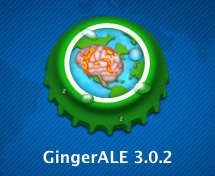Experiments | Locations
Locations, or coordinates, describe a specific point in the three-dimensional space of a spatially normalized brain. These coordinates are the locations of structural atrophy or functional activation found in this experiment's SPI.
Individual subject?
Indicates if the coordinates are from the data of an individual subject, as opposed to a group mean.
Hemisphere
The hemisphere (left or right) of a coordinate is often reported even though that information is already described by the X value of the coordinate. This additional information is also recorded here as a verification of the coordinates.
Adhere to the standard that left means a negative value for X. Inspect your table carefully to be sure that all coordinates listed from the left hemisphere have X values that are negative and those from the right hemisphere are positive. If not, switch the signs of your X values before entering them into the table.
X, Y, Z
Enter the values for X, Y, and Z for each coordinate as printed in the table (with the exception noted in the Hemisphere section).
Statistical Parametric Image (SPI)
SPI are three-dimensional maps of statistical values created as a part of the analysis. These results of these statistical images are described as a set of locations.
The type of analysis can change by using a different statistical test, such as Z scores, t-statistics or r values. Do not use voxel-wise P values; if only P values are reported then do not enter SPI units and values.
SPI Value: the statistical value reported in the paper for this location in the SPI. The Z-score or t-statistic can be either the maximum or the mean value for the cluster.
SPI Unit: the statistical test or variable used to create the SPI
Extent
The extent is the volume or size of a region. Record the extent of the results in cubic millimeters (mm³). This number usually ranges from the low hundreds to the low thousands of mm³.
Be sure to convert the extent to mm³ if necessary. Do not record the number of voxels, which relies on the volume of the voxels and varies across studies.
• 1 ml (milliliter) = 1 cc (cubic centimeter) = 1 cm³ = 1000 mm³
• 1 μl (microliter) = 1 ml / 1000 = 1 mm³


